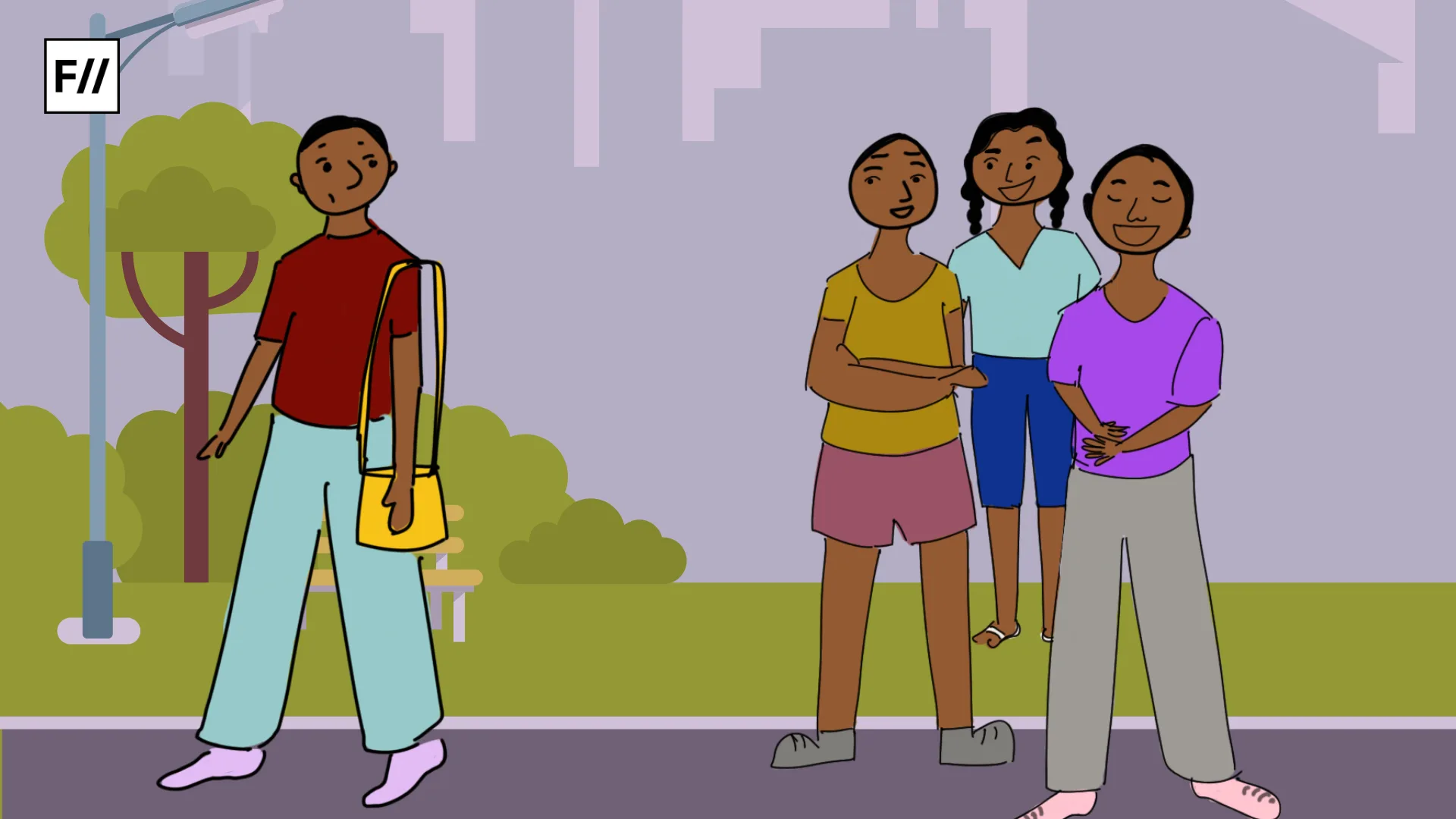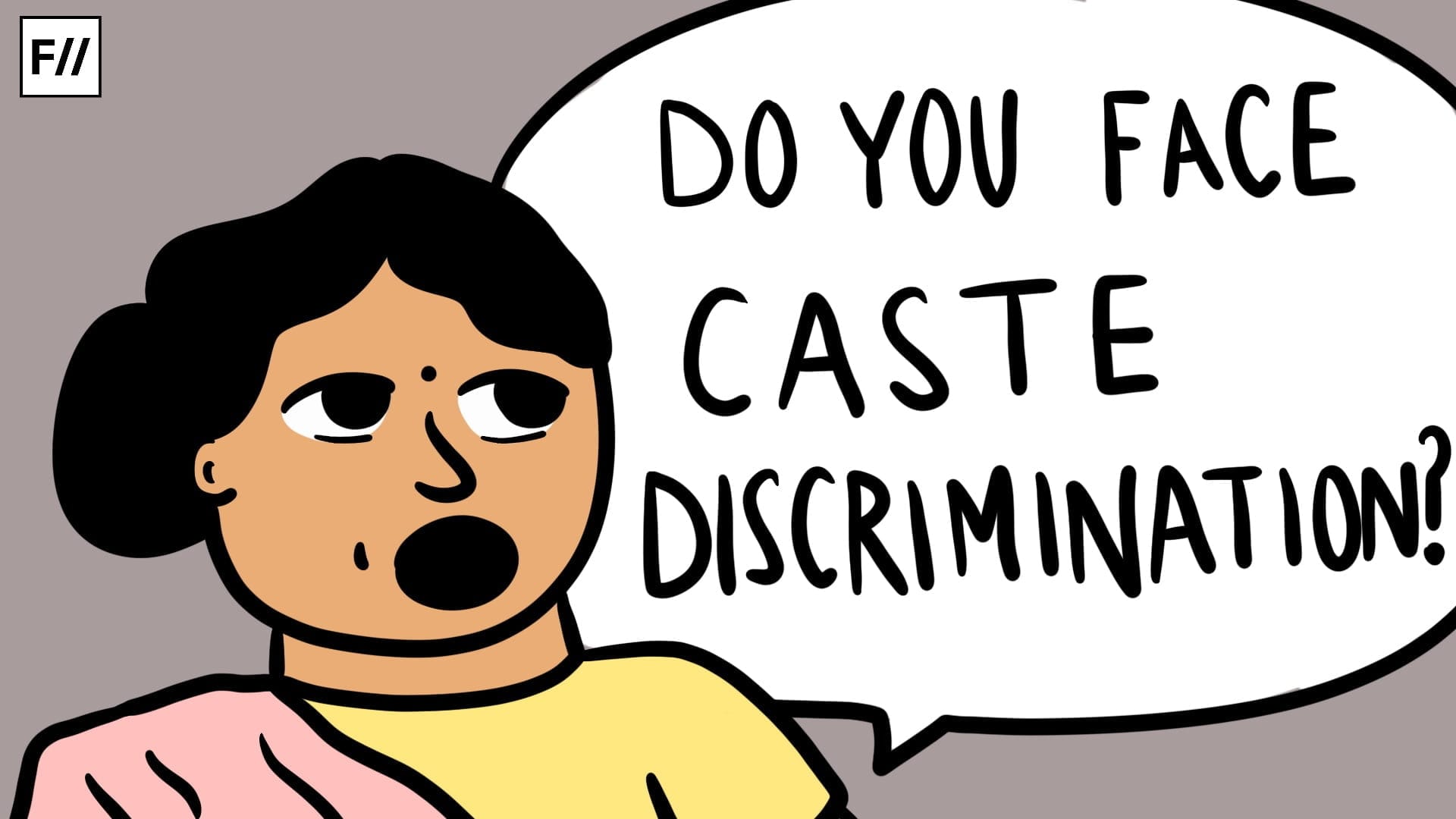All my life growing up in Dalit majoritarian localities in the Guntur district of Andhra Pradesh, I have been living in a confusing state of a hyphen, i.e. the dual identities of being a Dalit and a Christian. Sharobeem (2003) defines hyphenated identity as ‘a dual identity, an ethnocultural one, and evokes questions and debates regarding which side of the hyphen the person belongs to‘ (p.60).
Hyphenated identities are often referred to in the context of immigrant lives, showcasing the journeys of assimilation-alienation and constant self-questioning of ‘where exactly is home?‘. Dual identities are confusing and can be highly frustrating, whether it is for immigrants or people with more than one ethno-religious (intersecting) identity, in this context, Dalit Christians.
Dual identities are confusing and can be highly frustrating, whether it is for immigrants or people with more than one ethno-religious (intersecting) identity, in this context, Dalit Christians.
There is pervasive anxiety and frustration among Dalit Christians in the Telugu states who face alienation due to their unique identity. Many have experienced issues when filling out forms, such as mistakenly indicating “SC” for caste and “Christian” for religion instead of “Hindu” for official documents. This reflects the broader issue where Dalit Christians, who practice “Indian Dalit Christianity”, must often choose between identifying as BC-C (Scheduled Castes Convert to Christianity) or SC Hindus.

This forced choice leads to their alienation, exclusion, and marginalisation in both scenarios. In the bureaucratic world, and often within the broader Christian community, being both Dalit and Christian is not recognised; they are seen as neither. Yet, in reality, they are the “untouchable” ones in the dominant castes’ eyes, perceived as untouchable by the church, society, and bureaucracy
Dalit-Hindu-Christianness
As we were excluded from the Hindu temples though we wanted to come closer to Gods as Dalits, due to constant discrimination, my family started practicing “Indian Dalit Christianity” which is a mixture of both Hindu and Christian Dalit rituals. Our marriage ceremony is incomplete without Tali (the sacred marriage thread tied by the bridegroom to the bride’s neck according to Hindu tradition).
Our housewarming ceremony is incomplete without sacrificing a rooster and boiling the milk in the newly built home while simultaneously having a prayer meeting headed by a pastor. Like the majority of the Dalit Christian households, I was also raised seeing these Hindu rituals parallelly with a strong Christian consciousness, the liberatory potential of love and forgiveness, and seeing Jesus as the oppressed individual’s savior and ideal.
All of my extended family are Christians with few exceptions here and there and the Churches we attended were also Dalit Christian majoritarian.
All of my extended family are Christians with few exceptions here and there and the Churches we attended were also Dalit Christian majoritarian. However, my extended family and the Church community have constantly negated their Dalit identity for Christian belongingness. While being a Christian is seen as synonymous with Dalit ways of living and being in my family and church community through constantly using Dalit metaphors or references to mean Christians, (ex Food references like Beef, Boti-Blood fry in Christian households, etc), Dalitness is still unnamed.

They identify themselves primarily as Christians, and for them, they have abandoned the evils of Hindu oppression by identifying as a Christian. Yet they practice Dalit Hindu culture and rituals as a Christian, making their lives unique and interconnected with both cultures. Unlike the rest of the family, my mother has always played a key role in building my Dalit consciousness and instilled a sense of responsibility in me towards annihilating caste. She often revisits her experiences with me and growing up as a Dalit Christian woman I have felt the need to visbilise the Dalit Christian feminist standpoint.
Dalit Christian feminist standpoint
There is a difference in the way Dalit women speak and live as a result of the long history of socioeconomic and political oppression, and from an epistemological standpoint, Dalit women possess a unique epistemic lens (Guru, 1995). Dalit feminist standpoint marked this difference in knowledge production taking inspiration from the Black Feminist movement and Marxian standpoint theory, which argues that knowledge stems from lived experiences or what Harding (2003) calls one’s ‘social location‘.
Acknowledging the lived experiences of Dalit women, Paik (2021) writes that the Dalit womanist–humanist complex ‘enables a deeper analysis of the broader struggle for a comprehensive understanding of the different worlds inhabited by the most oppressed Dalit women‘ (p.2).
As a Dalit Christian woman, there is a difference in my experiences. Wherever I go, I am easily recognised as a Dalit Christian due to my bare forehead with the missing bottu (traditional Hindu decorative dot on the forehead). In the article “Gendering Dalit Christian Experience Through Bottu,” I explain how the absence of the bottu (decorative dot traditionally put on Hindu women’s forehead) shapes the unique experiences of Dalit Christian women, highlighting the intersections of gender, caste, class and religious identity (Jidugu, 2024).
In Telugu states, Christianity is seen as synonymous with Dalit identity, and a Christian is often exempted from taunting and demeaning only when they are dominant castes.
In Telugu states, Christianity is seen as synonymous with Dalit identity, and a Christian is often exempted from taunting and demeaning only when they are dominant castes. Dalit Christian poet Manasa Yendluri, in her series of stories on bottu, talks about the harassment Dalit Christian women go through on a daily basis due to them not having bottu. The missing Bottu becomes a central part of how Dalit Christian women navigate society and how society sees them.

This points towards the heterogeneity of the Dalit community in various aspects and portrays the lived realities of Dalit Christians from a feminist standpoint. The concept of intersectionality, as Crenshaw (1991) defines it, is crucial to the Dalit Christian feminist standpoint as Dalit women live, experience, and perceive the world not only at the intersections of caste, gender, and class but also religion.
Dalit Christian writers and poets like MM Vinodhini, Sujatha Gidla, Bama, Aruna Gogulamanda and Manasa Yendluri, as well as a few others, have brought forth this intersectional experience by asserting resistance through their writings, thereby marking a “difference”.
It is important to recognise the intersectional and complex experiences of Dalit Christians and the association and perception of Christianity as the Dalit religion to understand the Dalit Christian identity.
Especially in the context of the Telugu states, through my lived experiences as a Dalit Christian woman, I assert that when both identities lay in front, one contesting the other, none exists as a standalone in real. It is important to recognise the intersectional and complex experiences of Dalit Christians and the association and perception of Christianity as the Dalit religion to understand the Dalit Christian identity. This article further celebrates the epistemologies of the oppressed and calls for knowledge production grounded in the lived experiences of Dalit Christians, especially from a feminist standpoint.
References:
Crenshaw, K. (1991). Mapping the Margins: Intersectionality, Identity Politics, and Violence against Women of Color. Stanford Law Review, 43(6), 1241–1299. https://doi.org/10.2307/1229039
Gopal Guru. (1995). Dalit Women Talk Differently. Economic and Political Weekly, 30(41/42), 2548–2550. http://www.jstor.org/stable/4403327
Harding, S. G. (Ed.). (2004). The feminist standpoint theory reader: Intellectual and political controversies. Psychology Press.
Paik, S. (2021, June 19). Dalit Feminist Thought. Economic and Political Weekly. https://www.epw.in/journal/2021/25/special-articles/dalit-feminist-thought.html
Jidugu, K. H. (2024, May 29). Gendering Dalit Christian Experience Through Bottu. Doing Sociology. https://doingsociology.org/2024/05/29/gendering-dalit-christian-experience-through-bottu-jidugu-kavya-harshitha/
Sharobeem, H. M. (2003). The hyphenated identity and the question of belonging: a study of Samia Serageldin’s The Cairo House. Studies in the Humanities, 30(1-2), 60-84. https://link.gale.com/apps/doc/A117325783/AONE?u=anon~85683dec&sid=googleScholar&xid=99cb26b9




